In the realm of music, choosing the right instrument can be a pivotal starting point. Whether driven by a desire to express creativity, unwind after a long day, or delve into the joy of musical artistry, choosing an instrument that is quick to master sets the tone for an enjoyable and fulfilling musical journey.
Starting with easy-to-learn musical instruments set the stage for a fun and positive learning experience. It helps beginners feel more confident and excited about playing music. It’s like finding a friendly entry point into the world of melodies, making the learning process smoother and more enjoyable.
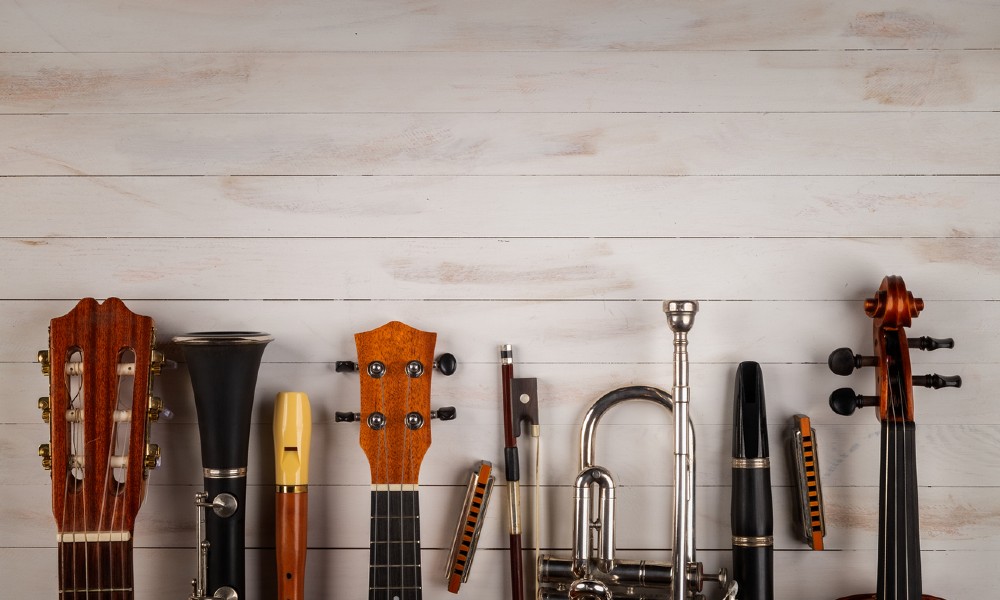
What is the Easiest Instrument to Learn to Play?
Ukulele
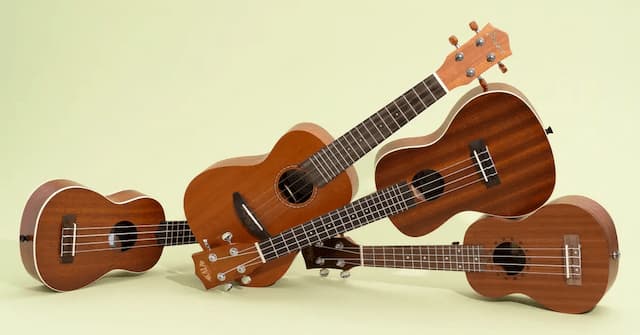
The ukulele, characterised by its compact size and cheerful tones, stands out as a beginner-friendly instrument. Its manageable four nylon strings and simplified chord patterns aid in an accessible learning experience. Amateurs find transitioning between chords relatively easy due to the ukulele’s straightforward fretboard and limited strings, enabling quick progress in playing melodies and strumming patterns.
For beginners, online tutorials, chord charts, and mobile apps offer valuable resources, providing step-by-step guides and practice materials, making the ukulele an inviting choice for those eager to start their musical journey.
Piano/Keyboard
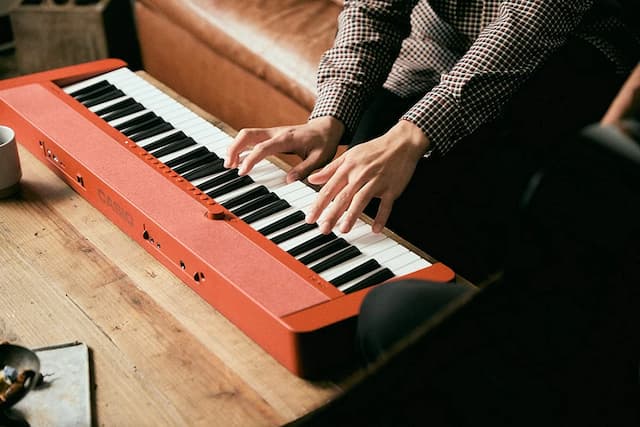
The piano or keyboard, is one of those special music instruments renowned for the versatility and intuitive layout that offer beginners a rich musical foundation. Its visual arrangement of keys simplifies the understanding of music theory, aiding in learning, creating and playing music. Beginners appreciate the straightforward progression of notes, allowing gradual learning and quick adaptability.
Basic piano tutorials, online resources, and apps cater to beginners and provide accessible lessons and practice materials. With these resources, newcomers can swiftly progress in learning fundamental piano techniques and playing melodies, establishing the piano as an inviting instrument for beginners seeking musical exploration.
Guitar

The guitar’s universal appeal and approachable nature make it an attractive choice for beginners. Its basic chord structures, combined with entry-level songs, facilitate an enjoyable learning experience. Beginners grasp strumming patterns relatively easily, paving the way for chord transitions and familiar tunes.
Numerous online tutorials available even at some music shop and retailer specialists, chord diagrams, and songbooks cater to beginner guitarists, offering comprehensive guidance and practice materials. All this makes the guitar an enticing option for novices stepping into the world of music.
Recorder
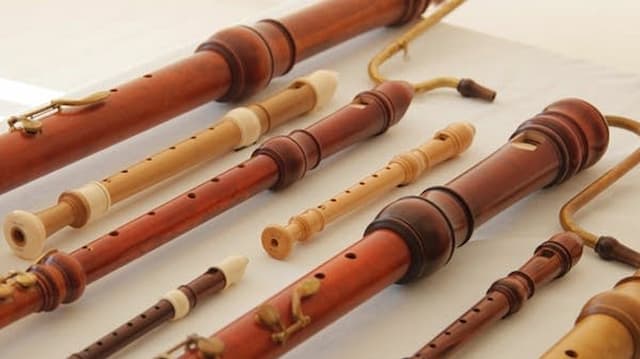
A portable and straightforward wind instrument, the recorder charms beginners with its simplicity. Featuring a small range of notes and minimal fingerings, it offers a gentle learning curve suitable for learners of all ages. Amateurs quickly master basic tunes, fostering an introduction to wind instruments.
Online resources and beginner-friendly instructional books provide valuable guidance, offering simplified instructions and practice materials tailored for newcomers. With its ease of learning and accessibility, the recorder serves as an engaging starting point for beginners venturing into the world of music.
Hand Percussion
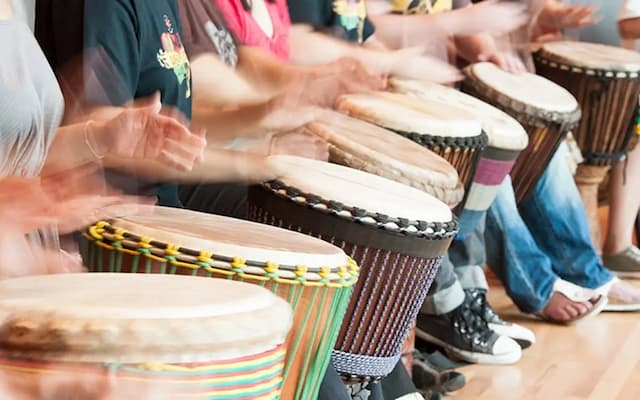
Hand percussion instruments like bongos and cajón are simple drums played by hand. They’re easy for beginners to learn because of their uncomplicated design and the different sounds they make when you hit them.
Learning these drums involves basic hits and techniques. For bongos, you try open tones, closed tones, and slaps. With cajón, you make bass tones, snare tones, and accents. Each hit creates a different sound. Online lessons and apps offer easy instructions and practice tips. These resources teach basic techniques and rhythms, helping beginners learn percussion from home at their own pace. Pay a music instrument supply store a visit, either in person or online, and find your favourite percussion design.
Criteria for “Easy-to-Learn” Musical Instruments
- Simplicity of Technique: Instruments with straightforward playing techniques, fewer complex fingerings, or more simple note structures are often easier for beginners to grasp.
- Accessibility: Instruments that are readily available, affordable, and have many learning resources, such as tutorials or beginner-friendly materials, make the learning process smoother.
- Comfort: Consideration of an instrument’s physical demands, like size and weight as instruments that are comfortable to hold or handle can facilitate learning.
- Learning Curve: Instruments that offer a relatively shorter learning curve, allowing beginners to produce pleasing sounds or play simple melodies early in their learning journey, can boost motivation.
- Versatility: Instruments that allow for gradual skill development and accommodate various musical genres or styles cater to diverse preferences and foster long-term interest.
Tips for Learning an Instrument Easily
- Consistent Practice and Dedication – Regular, consistent practice is key to improving on any instrument. Set aside dedicated practice time each day or week to develop skills gradually.
- Utilise Online Resources and Tutorials – Take advantage of the plethora of online tutorials, instructional videos, and apps available for various instruments. These resources offer guidance and structured lessons for beginners.
- Start with Basic Techniques – Begin by learning basic techniques and fundamental principles of the instrument. Mastering the basics provides a strong foundation for more advanced skills.
- Slow and Steady Progression – Don’t rush through learning phases. Progress gradually from simple exercises to more complex ones, allowing time for skills to develop naturally.
- Seek Guidance from Instructors or Join Classes – Consider taking lessons from a qualified instructor or joining beginner-level classes. Professional guidance ensures correct techniques and consistent improvement.
- Practice Proper Posture and Technique – Focus on maintaining correct posture and hand positioning while playing. This reduces the risk of injuries and aids in producing better sound quality.
- Patience and Persistence – Be patient with yourself and understand that improvement takes time. Persist through challenges and setbacks, staying motivated and focused on your goals.
- Explore Different Music Styles – Experiment with various music genres or styles to keep learning engaging and enjoyable. This diversifies your skills and keeps the learning process interesting.
- Record and Evaluate Your Progress – Record your practice sessions occasionally and listen back to track your improvement. This self-evaluation helps identify areas for improvement.
- Stay Motivated and Have Fun – Maintain enthusiasm for the musical instruments of your choice by playing music you enjoy. Keep the learning experience enjoyable to stay motivated throughout your musical journey.
To Conclude
Learning a musical instrument, regardless of its perceived difficulty, brings immense joy and satisfaction. Regardless of the instrument’s level of ease, the sheer pleasure derived from creating music and expressing oneself artistically is unparalleled. It’s about the passion, creativity, and sense of fulfilment that comes with every note played.
Embrace the learning process, enjoy the challenges, and relish the progress. Remember, the beauty of music lies not just in the destination but in the delightful journey of learning






















